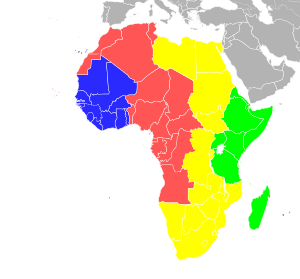Time in Algeria facts for kids
Imagine the world is like a giant clock! Because the Earth is always spinning, different parts of the world experience sunrise and sunset at different times. To keep track of time properly, countries use something called a time zone. A time zone is a region that uses a uniform standard time. This helps people know what time it is, no matter where they are.
Contents
Time in Algeria
The country of Algeria uses a time zone called Central European Time (CET). This means that Algeria's clocks are set to be one hour ahead of a special global time called Coordinated Universal Time (UTC). You might see this written as UTC+1.
What is Central European Time (CET)?
Central European Time (CET) is a common time zone used by many countries in Europe. It's one hour ahead of UTC. This time zone helps countries like Algeria, France, Germany, and Spain stay on a similar schedule.
What is Coordinated Universal Time (UTC)?
Coordinated Universal Time (UTC) is the main time standard for the world. It's like the "zero point" for all other time zones. Scientists and timekeepers around the globe use UTC to make sure everyone's clocks are in sync. All other time zones are measured as being ahead of or behind UTC.
No More Daylight Saving Time
Many countries change their clocks twice a year for something called daylight saving time. This means moving clocks forward by an hour in spring and back by an hour in autumn. The idea is to make better use of daylight. However, Algeria stopped observing daylight saving time in 1981. This means their clocks stay the same all year round.
What is Daylight Saving Time?
Daylight saving time (DST) is a practice where clocks are moved forward by one hour during warmer months. This makes evenings feel longer because sunset happens later. Then, in the colder months, clocks are moved back to standard time. It's like getting an extra hour of daylight in the evening during summer!
Time Before 1981
Before 1981, Algeria used different time zones. They used Western European Time (WET) and Western European Summer Time (WEST). WET is the same as UTC, and WEST is UTC+1. So, while the names were different, the time difference from UTC was similar to what they use now.


